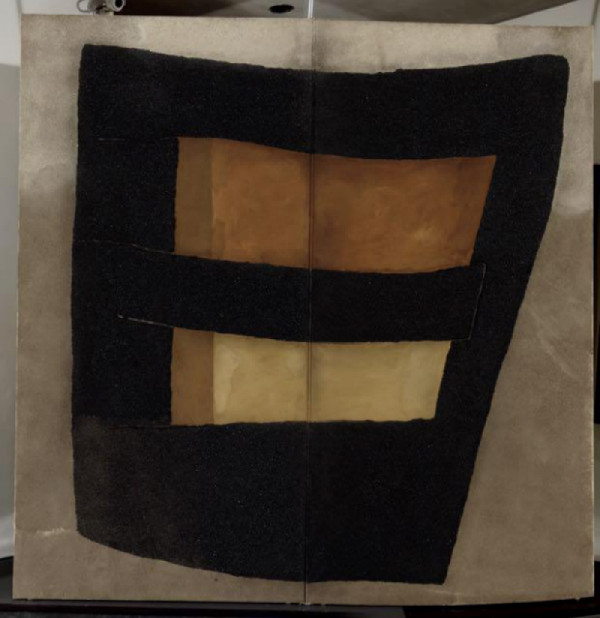Cipher
| CCAC #: | 0201 |
| Artwork title: | Cipher |
| Artist(s): |
Karel Nel |
| Year made: | 2007 |
| Artwork type: | Sculpture or object |
| Medium: | Mixed media containing carbon and collected dust on hinged screen |
| Dimensions (mm): | 2240 x 1650 |
| Source: | Donated by the artist |
| Year acquired: | 2007 |
| Installation type: | Movable artwork |
| Current location: | On private display |
| Signage: | "Cipher" means an encoded system of writing that most people cannot understand so that messages remain secret. It can also refer to a person or group of people without power, or people who are considered to be unimportant, that are exploited by others. The artwork alludes to early mark-making by humans that, over time, became related to meaning, and subsequently developed into formalised pictograms, hieroglyphics and script. Such symbols enabled people to record details and events of the world and made it possible to set down a narrative for posterity, whether a myth of origin or a record of conquest. The bold, abstract rune-like form in black is made from 540 million-year-old carboniferous dust from Eurasia, part of Pangea, a landmass that separated over aeons in a process known as continental drift. This process led to the evolution of distinct species, races and the development of cultures on different continents. Dust from Kliptown, Soweto, which witnessed the brutalities of apartheid, was also used in the artwork, as was dust from Center Sandholm, a Danish refugee camp near Copenhagen, where displaced migrants were held. The origin of these materials allude to the schisms between people caused by ideology and the discriminatory, often-brutal, politics informed by notions of race and otherness. |

Photographer: Staff
Photo copyright: CCT
NOTE: The process of photographing artworks in the CCAC is underway - we are currently working to improve image quality and display on the CMS but have included internal reference photos for identification purposes in the interim.